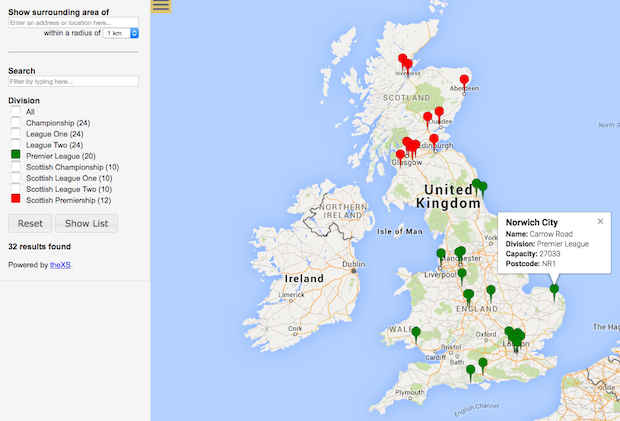Use Royal Mail's Postcode and Address Finder to search for any UK address or postal code. See this address on a map.

In my role as the performance analyst for the I often need to show the locations of suppliers and buyers. In this post, I want to share some free tools that I use to convert postcode data into useful maps. My example shows.

Mapping Sheets This allows me to plot postcodes onto a Google Map. When I put the data into a Google Sheet and select the relevant columns, I can create a map with pins to show the locations of the football stadiums. These are the columns selected for the sample data: Building the map from a Google Sheet From this, I can generate this map: Google Map with all the locations plotted The ability to filter the data and click on pins to open up more information is a useful feature. Filtered Google Map Mapsdata I use when I want to show concentrations of locations and have less than 1,000 postcodes. The data needs to be uploaded as an Excel spreadsheet. This is an example of the clustering feature.
The marks show how many stadiums there are in the area. Controls on the left allow the geographical distances to be adjusted. Mapsdata clustering feature When I have large numbers of postcodes I find the Mapsdata heatmapping feature really useful. This shows the same data as a heatmap.
Mapsdata heatmap feature Mapsdata also has a feature that allows me to show bubbles based on a particular column’s values. Here I’ve set the tool to show the size of bubble as the capacity of each of the stadiums. Ex4 To Mql4 Decompiler Crack. Mapsdata bubble feature Mapsdata also provides several useful to convert data such as postcodes to longitudes and latitudes.